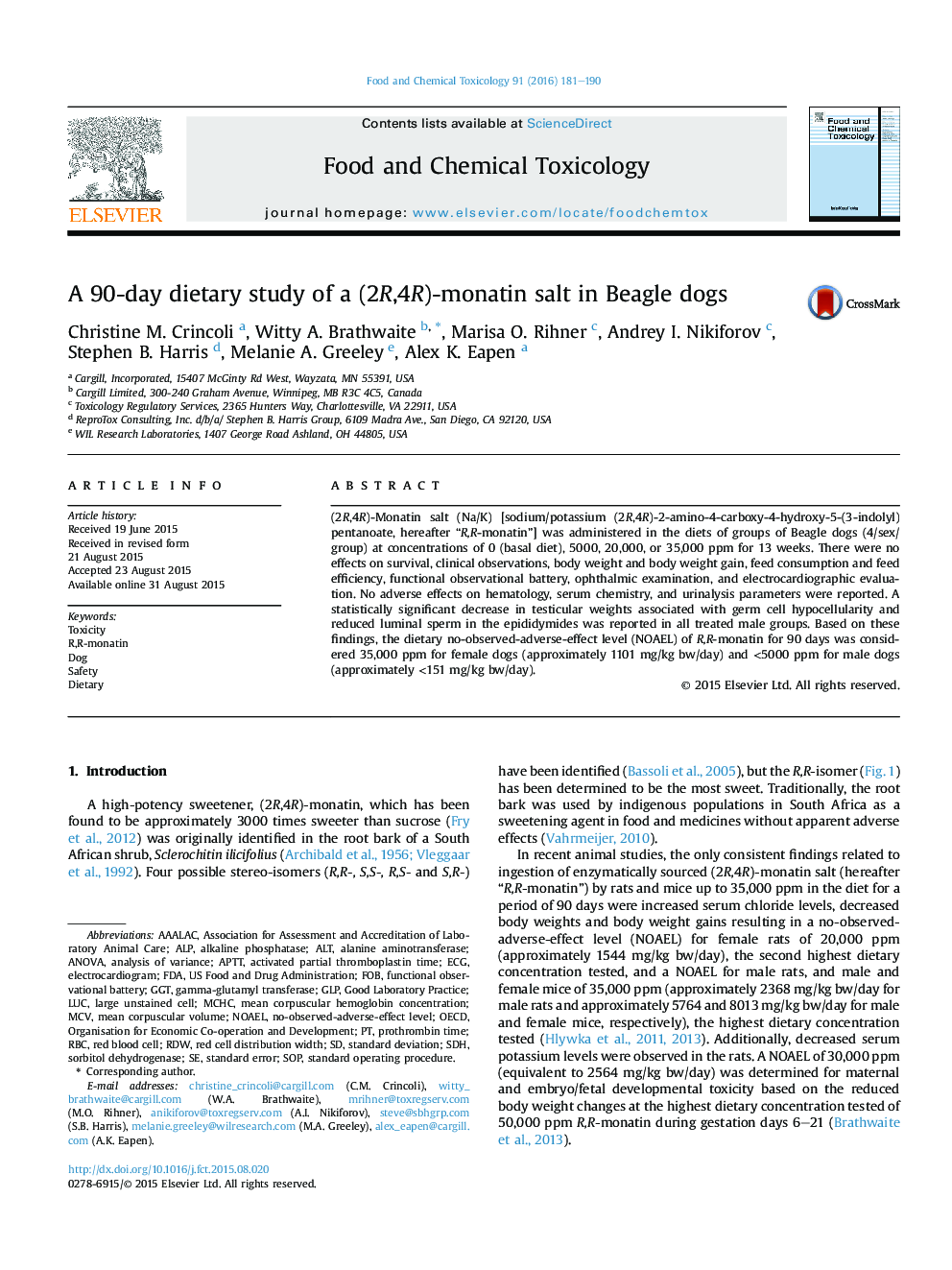| Article ID | Journal | Published Year | Pages | File Type |
|---|---|---|---|---|
| 5849417 | Food and Chemical Toxicology | 2016 | 10 Pages |
â¢Beagle dogs were fed diets containing 0, 5000, 20,000, or 35,000 ppm R,R-monatin for 13 weeks.â¢A statistically significant decrease in testes weights with microscopic correlates was reported in all treated male groups.â¢The no-observed-adverse-effect level (NOAEL) was determined to be 35,000 ppm for female dogs and <5000 ppm for male dogs.
(2R,4R)-Monatin salt (Na/K) [sodium/potassium (2R,4R)-2-amino-4-carboxy-4-hydroxy-5-(3-indolyl) pentanoate, hereafter “R,R-monatin”] was administered in the diets of groups of Beagle dogs (4/sex/group) at concentrations of 0 (basal diet), 5000, 20,000, or 35,000Â ppm for 13 weeks. There were no effects on survival, clinical observations, body weight and body weight gain, feed consumption and feed efficiency, functional observational battery, ophthalmic examination, and electrocardiographic evaluation. No adverse effects on hematology, serum chemistry, and urinalysis parameters were reported. A statistically significant decrease in testicular weights associated with germ cell hypocellularity and reduced luminal sperm in the epididymides was reported in all treated male groups. Based on these findings, the dietary no-observed-adverse-effect level (NOAEL) of R,R-monatin for 90 days was considered 35,000Â ppm for female dogs (approximately 1101Â mg/kg bw/day) and <5000Â ppm for male dogs (approximately <151Â mg/kg bw/day).
